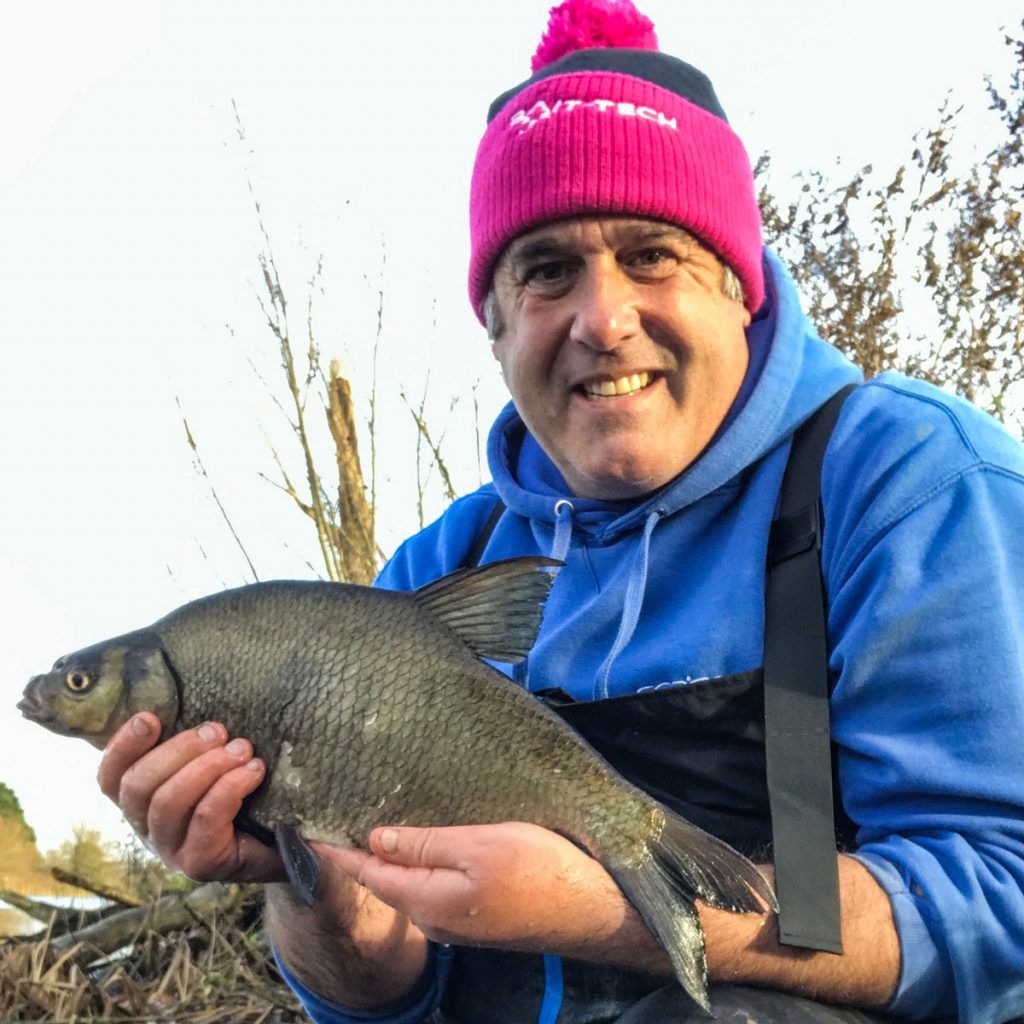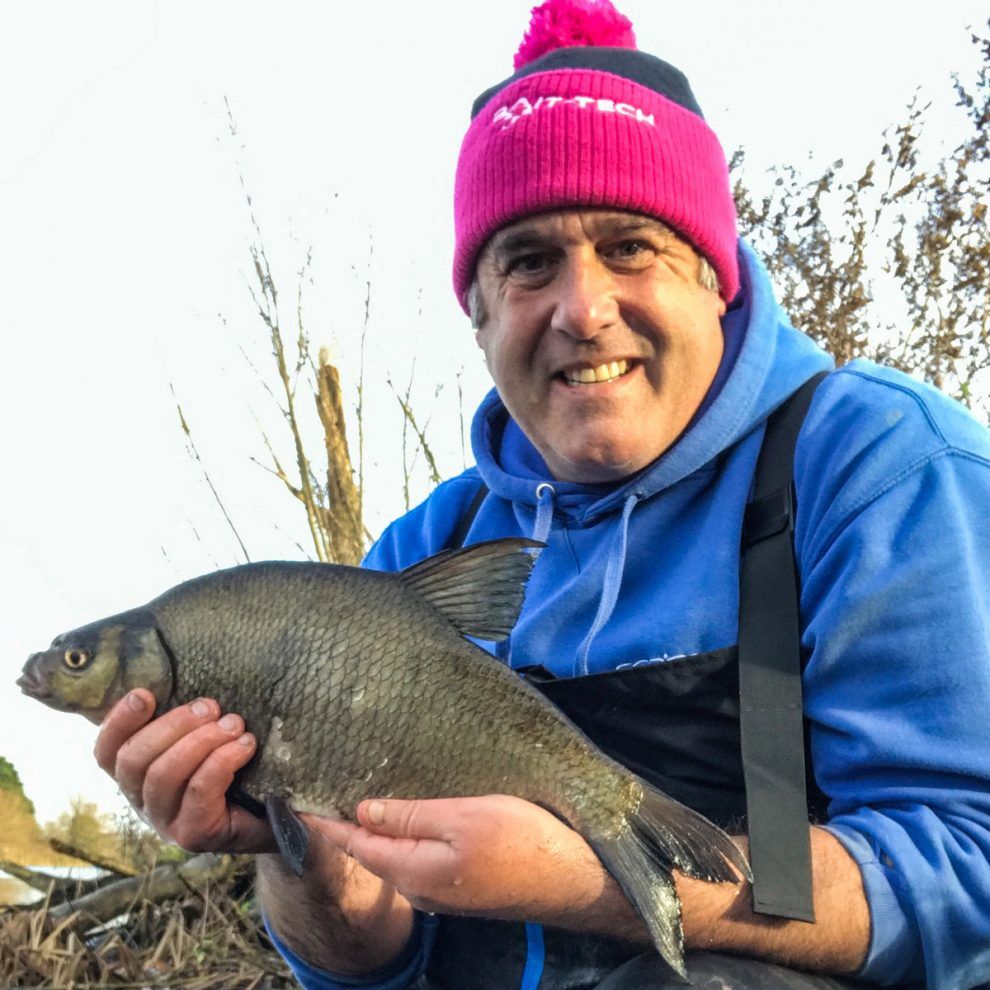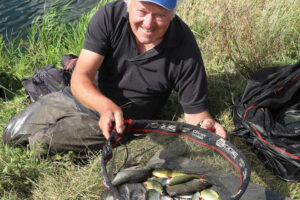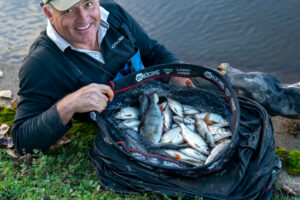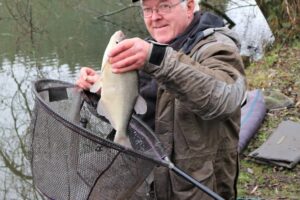With all the recent rain and a dumping of snow, my local River Ouse has received a more than welcome flush through. Catching the river at the right time can be key in any situation and with a day off work, a trip to the bank was a must.
I make the long trip, all of five minutes, to a section that I believe is one of the toughest I fish. Most of the sections I fish are between 12 and 20 feet deep, but this section is 11 feet deep. With the river running off, the level is slightly lower than normal, which enables me to sit down into the water.
On arrival, the river is running slight, but nowhere near as fast as the previous day, so it was fining off lovely. The way the river was shaping up would provide perfect conditions for one of my favourite styles of tip fishing, rod up with a big bow, watching for those all-important drop back bites.
Tackle
My rod of choice is a no brainer for me, the Cadence CR10 13ft #3 Feeder rod. This rod isn’t just a power tool, it has a nice, soft playing action that is perfect for skimmers and bream in these conditions. The river here can fluctuate in flow at any time, so the quiver tip choice is important and for this session I chose to use a 3oz tip. Even though I am aiming to fish with a 1.5oz feeder, there is a chance I might need to step this up at any time and using the more powerful 13ft #3 gives me this option. Also, weed on the line will be a problem and the larger guides on the #3 tip make this a lot easier to cope with.
Matching the reel to the rod is key, I could be casting up to 3oz if the conditions change, so the bigger CS10 5000 Feeder Reel is more than up to the job.
Due to the weed problem mentioned earlier, I would not be using a shockleader. Any passing weed would catch on the leader knot and not be able to pass through the tip eye. This risks a snapped tip. Mainline of 6lb breaking strain is more than capable in the conditions I’m faced with and has plenty of backup to cushion any extra casting weight that may be required.
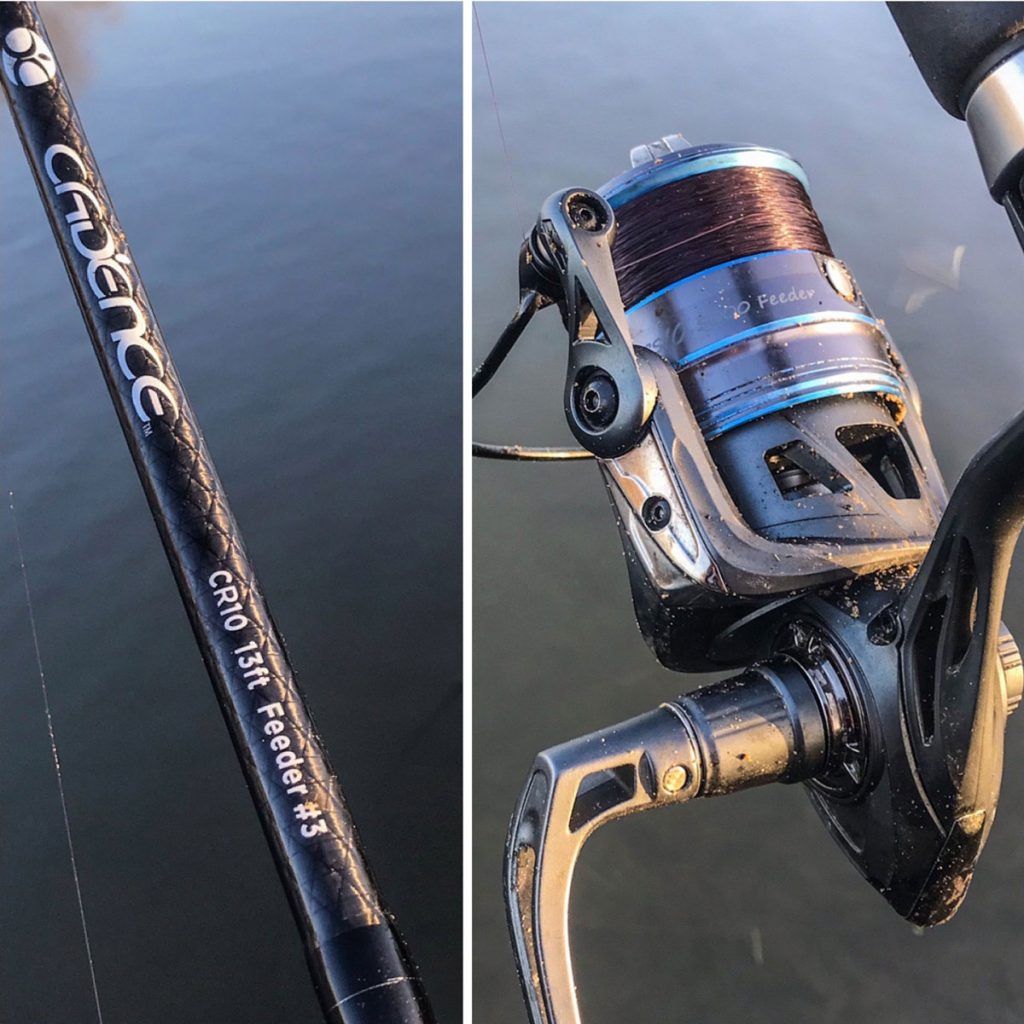
Key to fishing with this style is to make sure the feeder is balanced perfectly, so even tiny movements dislodge the feeder, which in turn, produces a drop back bite. To make sure I stay in touch with any changes in flow, my choice of feeders come from the Nisa range. I also carry a range of clip on weights from 5g to 15g, which I can add or remove from the feeder when required. Many a time a change from a 1.5 to 2oz feeder is too much and the simple addition of a 5g clip on, is all that is needed to critically balance the feeder.
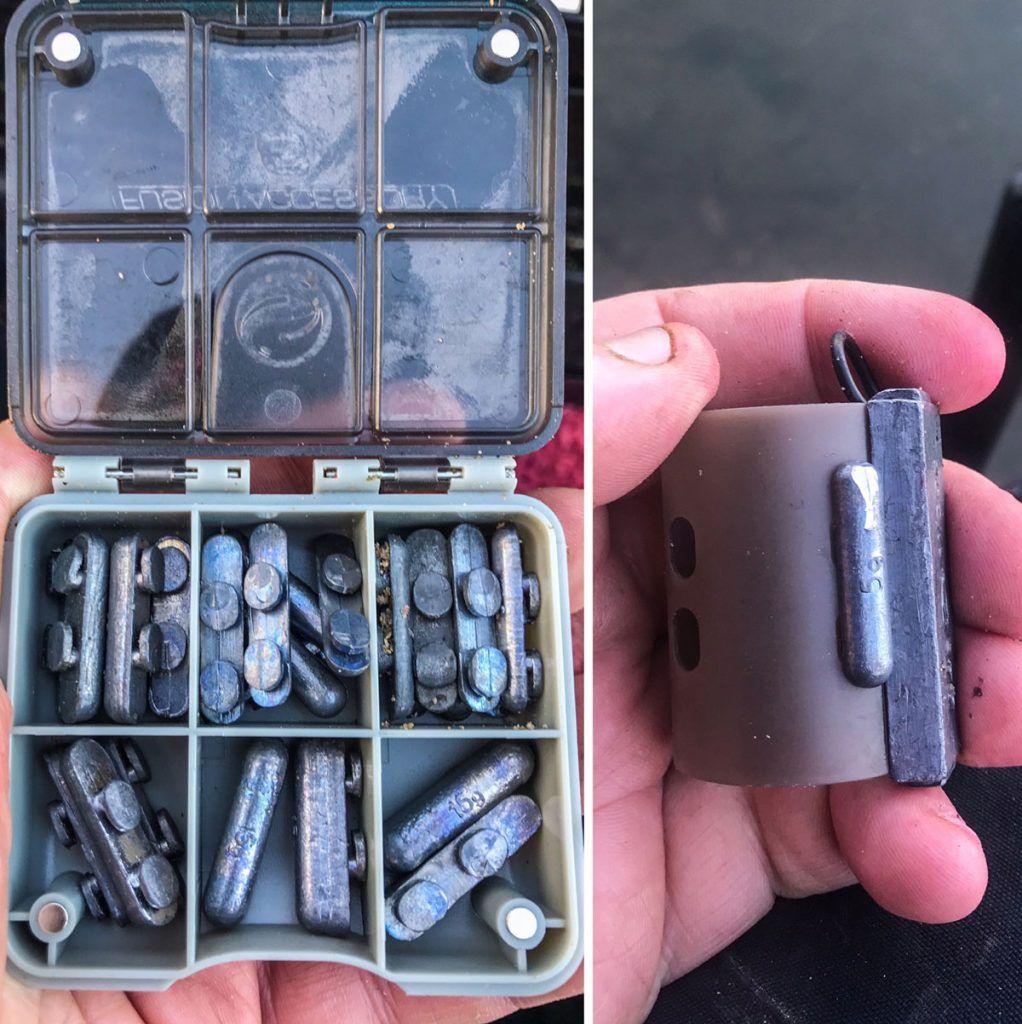
The way I setup my feeders couldn’t be simpler. A helicopter rig is my choice for today. A quick change swivel link for hooklength attachments, which is sat between two stops and the feeder attached below this on a small, twizzled boom.
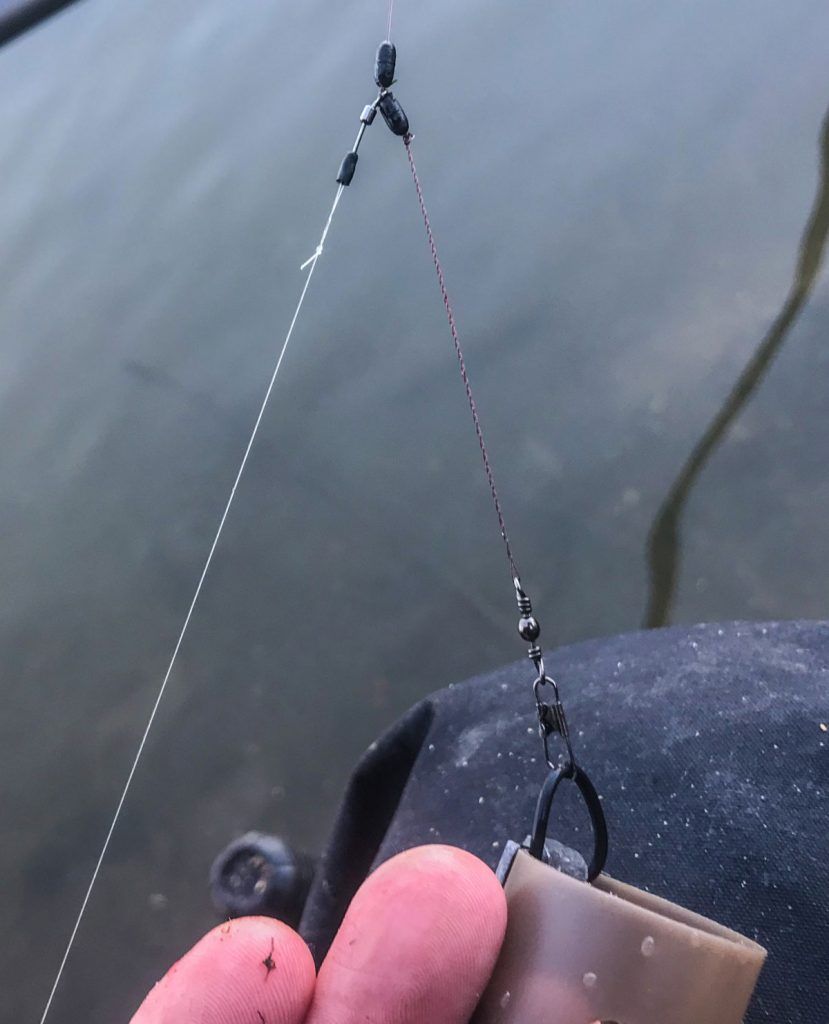
A small addition but a massive edge to my setup is four number eight Stotz. I call these my weed shot, and they are added in two vital places. The first two are placed six inches apart above the feeder. These act to pick up any weed before it may clog around the feeder. The next two are the most important on the rig and are placed six inches apart above the hook. These keep the hook bait as clean as possible from any passing weed. These are vital, as fish can’t eat what they can’t find!
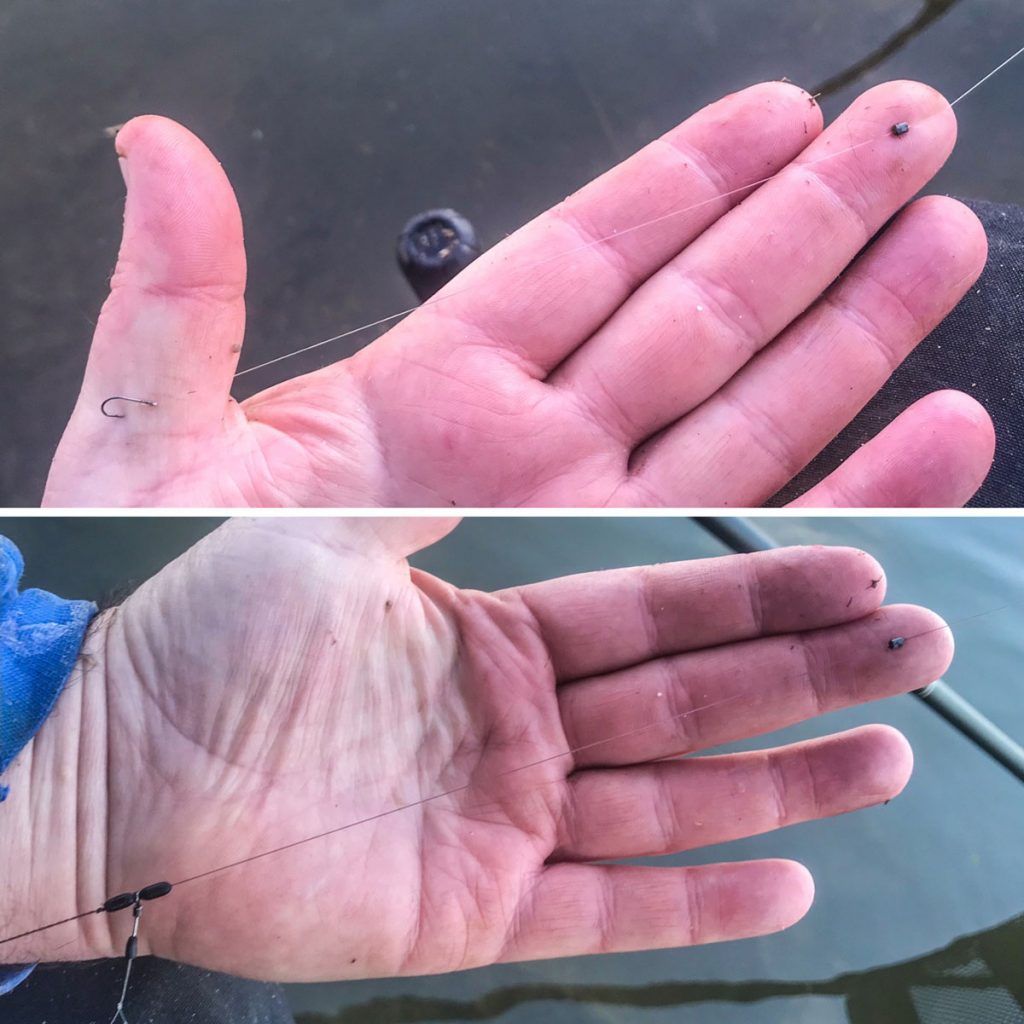
About hooklengths, fluorocarbon has been my go to line recently and for this setup I would be using it in 0.14mm. It has zero memory, so line spin ups and twisting are practically a thing of the past and have transformed my fishing massively. I have used fluorocarbon in the past, but good friend and fellow Cadence Ambassador, Wayne said to me earlier in the season “the greater the cost, the better the fluorocarbon you will get for your money” and since changing to my current brand, I can see exactly where he is coming from.
Bait
Groundbait choice is of personal preference in coloured water for many. The use of fishmeal or a natural groundbait is always a tough decision for me. I believe that when the river runs, the fish are swimming against the flow which in turn burns up energy. This requires the fish to stop at some stage and have a feed. A strong fishmeal aroma or the sweet scent of a natural mix, both have their place. Today, the natural mix has swung it. I’m using a 50/50 mix of BaitTech ProNatural Bream and ProNatural Dark, all mixed the previous evening with a good helping of molasses in the mixing water.
On the hookbait front, it is as simple as simple can be. Half a pint of red maggot and the same of fluro maggot. Half a pint of dead maggot and 3/4 of a pint of caster.
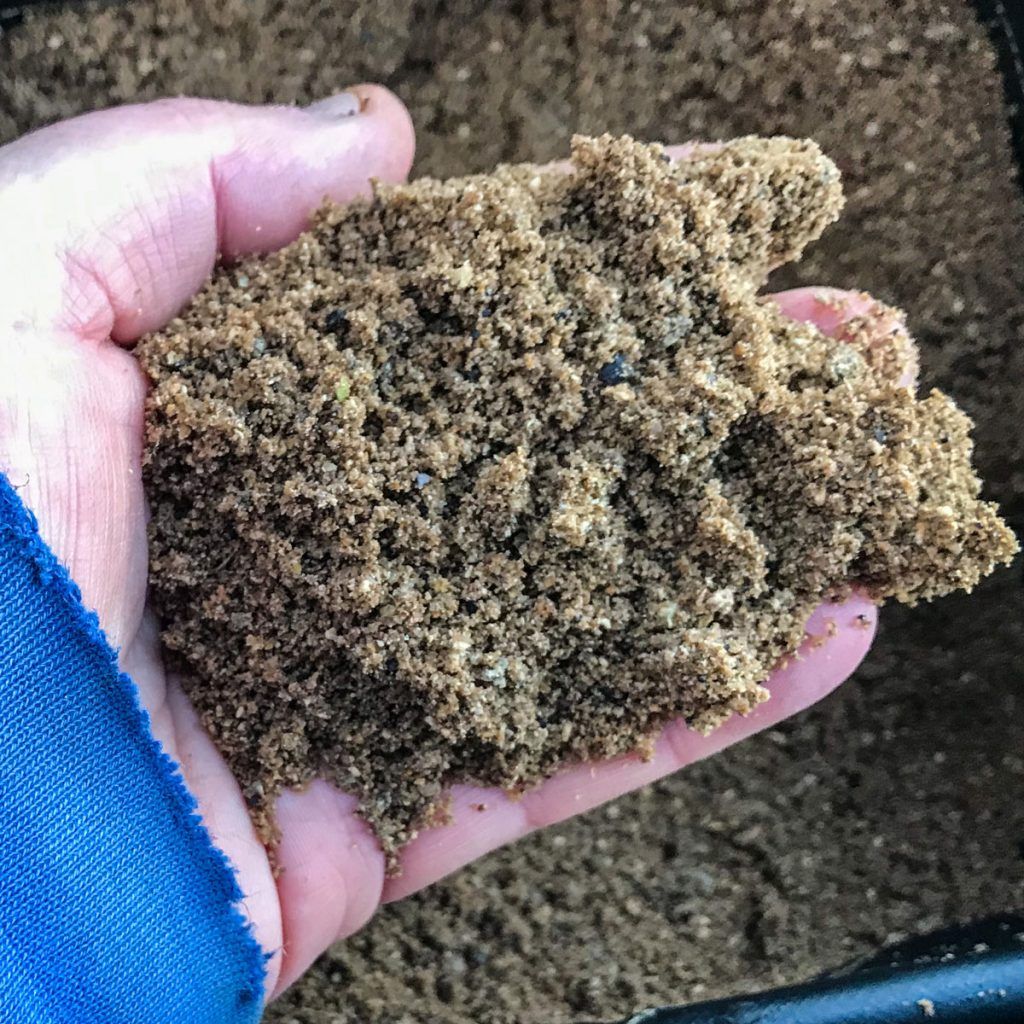
Back to the peg
Back to the peg itself and the level is around 10 to 12 inches down from two weeks ago. This makes sitting down on the gravelly bottom simple, but you always need to be aware of the odd silty patch that could easily get you a wet welly!
Once settled, I have a cast around with a 40g bomb to get a feel for any lying weed or snags that might hinder proceedings. With this done, it is time to get some bait into the swim. I have several quick five minute casts with a good pinch of caster and dead maggot each time. Not only does this allow me to get some bait down, but it also gives me an opportunity to find out how long I can leave the feeder in the swim before picking up too much weed on the line.
The bottom of the far shelf is around two thirds across here and is always my starting point whenever conditions allow. The pace has fined off perfectly and the opening gambit of a 1.5oz feeder, is too heavy so I swap to a 1oz feeder. This is spot on.
To fish this correctly the rod tip needs to be high up in the air and pointing downstream. This enables the flow to pick up on the slack line to create the bow. The objective is to have the line coming straight back up to the tip and not have the rod tip at an angle, as this won’t give you the right presentation.
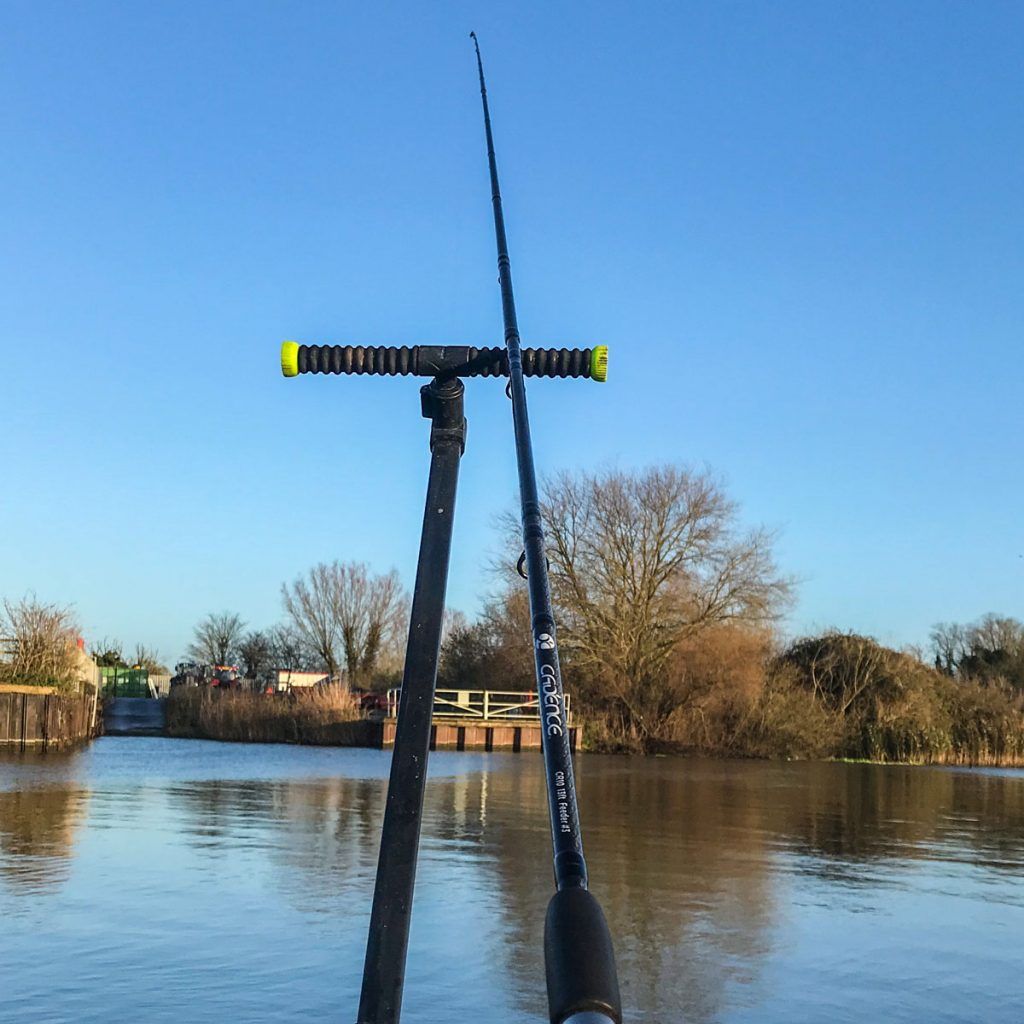
When I cast out, I feel the feeder down to the bottom by letting line out through my fingers, I then bring the rod back behind my head paying the slack line out, this creates the bow.
The first indication comes after around an hour’s fishing, which results in a welcome bream, promptly followed by another twenty minutes later, not a huge fish, but a great start none the less!
The session carries on as I pick up an odd fish now and again, in total I end up with six bream, three skimmers, two hybrids and a single roach. All things considered, with a dose of rain the day previous and some heavy rain again in the early hours, it has been an excellent session!
Keeping in touch with the flow and chopping about with hook baits, I have managed to get a few bites and a nice net of fish.
It just shows even in the most uninviting of conditions, there are still bites to be had.
